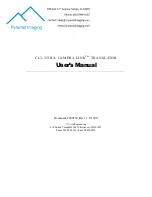
Styles
63
PSR-2100/1100
ACMP
INTRO
BREAK
STYLE CONTROL
ACMP
INTRO
START/STOP
MAIN
ENDING
/ rit.
AUTO
FILL IN
OTS
LINK
SYNC.
STOP
SYNC.
START
BREAK
STYLE CONTROL
ACMP
INTRO
START/STOP
MAIN
ENDING
/ rit.
AUTO
FILL IN
OTS
LINK
SYNC.
STOP
SYNC.
START
BREAK
STYLE CONTROL
Auto Accompaniment section
Split point
E
ND
When the [ACMP] button is set to on, you can play/indicate chords from the auto
accompaniment section of the keyboard. (Depending on the settings, this may be
the range of the Left voice, or the entire keyboard.)
Turn SYNC. (SYNCHRONIZED) START on.
The Tempo can be adjusted
using the TEMPO [
][
] or
[TAP TEMPO]
button.
If you tap the
[TAP TEMPO]
button, the tempo will adjust to
the same speed that you tapped.
You can set the key range
for auto accompaniment
(page 141).
• You can begin the rhythm
channels (tracks) of the
Style by pressing the
[START/STOP]
button.
• The rhythm channels of
the style can also be
started by tapping the
[TAP TEMPO]
button.
With the style stopped,
tap the
[TAP TEMPO]
button three, four or five
times (three for 3/4 time,
four for 2/4 or 4/4 time,
five for 5/4 time).
When you simultaneously
play back accompaniment
styles with a song, the
accompaniment parts
recorded to the song (chan-
nels 9 - 16) are temporarily
replaced by the selected
accompaniment style — let-
ting you try out and use dif-
ferent accompaniment with
the song (page 80).
Turn ACMP off.
3
4
5
6
Sync. Start
Enabling this lets you start
the style simply by playing
the keyboard.
As soon as you play a chord with the auto accompaniment section, the style starts.
For details about chord fingerings, refer to page 65.
Accompaniment Style Characteristics
The defining characteristics of some of the accompaniment styles are indicated above the relevant style names in the Open/Save display.
Session!
These styles provide even greater realism and authentic backing by mixing in original chord types and changes, as well as special riffs with
chord changes, with the Main sections. These have been programmed to add “spice” and a professional touch to your performances of
certain songs and in certain genres. As a result, the styles may not necessarily be appropriate — or even harmonically correct — for all
songs and for all chord playing. In some cases for example, playing a simple major triad may result in a seventh chord, or playing an on-bass
chord may result in incorrect or unexpected accompaniment.
START/STOP
SYNC.
STOP
SYNC.
START
Stop the style.
PSR2100_E.book Page 63 Tuesday, January 28, 2003 2:11 PM
Содержание Portatone PSR-1100
Страница 172: ...Index PSR 2100 1100 172 MEMO...
















































